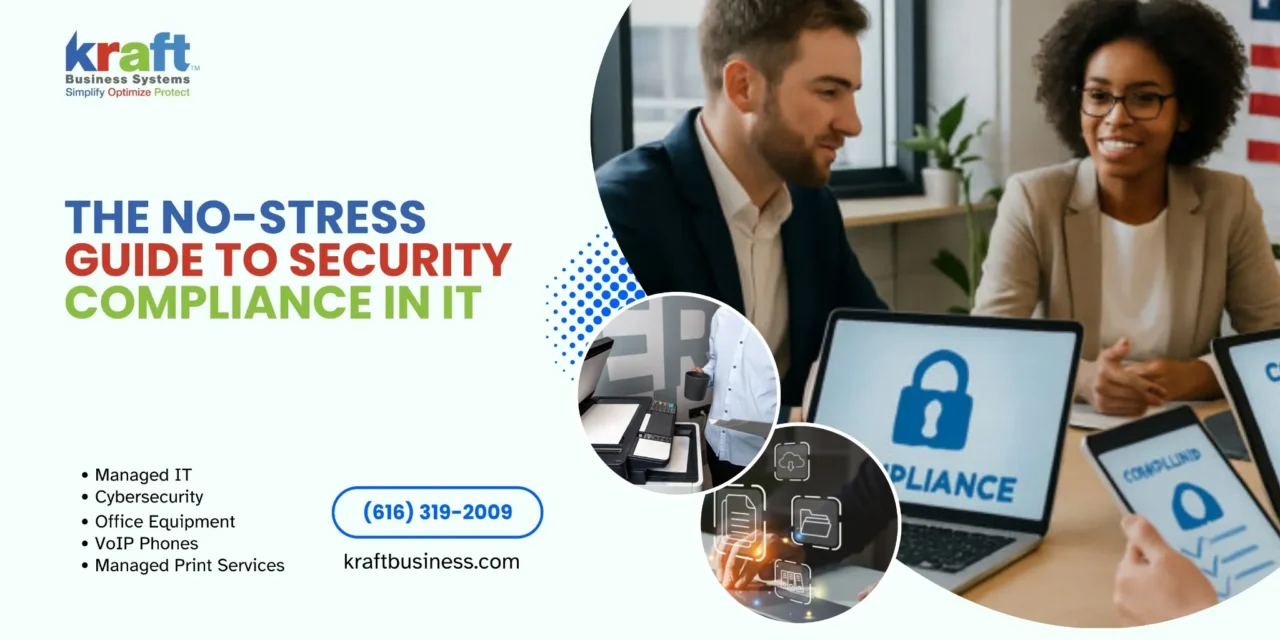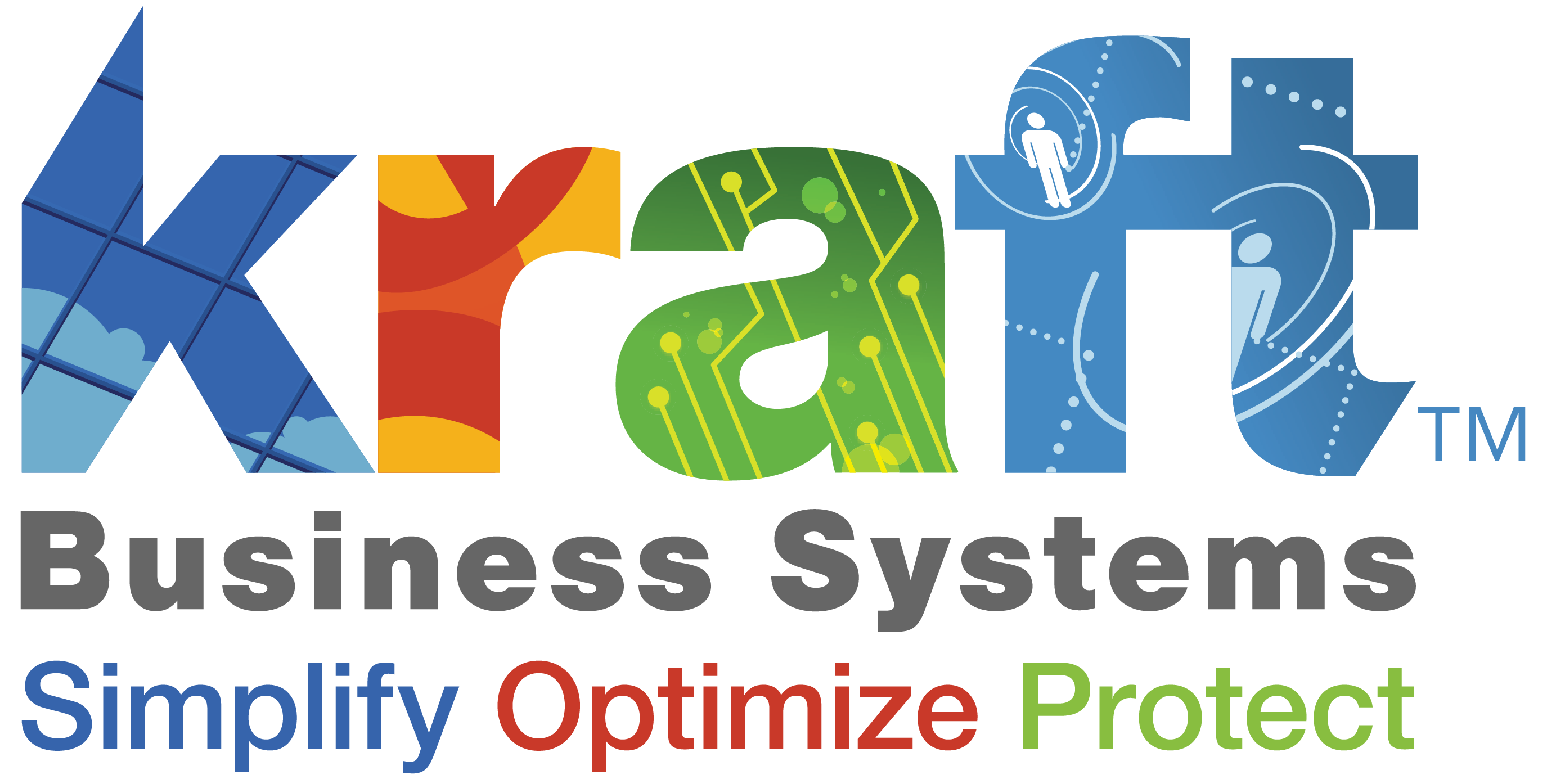Security compliance IT is the practice of meeting legal, regulatory, and industry requirements to protect your organization’s data and technology systems. It combines cybersecurity controls with documented processes to prove you’re following the rules that govern your industry.
Quick Answer: What is Security Compliance IT?
- Definition: Meeting mandatory security standards set by laws and industry frameworks
- Purpose: Protect sensitive data while proving compliance to auditors and regulators
- Key Components: Technical controls (encryption, access management) + documentation + regular audits
- Common Standards: GDPR, HIPAA, PCI DSS, ISO 27001, SOX, NIST Cybersecurity Framework
- Bottom Line: It’s not optional—non-compliance brings hefty fines and damaged reputation
Think of it this way: you wouldn’t drive without car insurance because the risk is too high. Security compliance works the same way for your business data.
The stakes have never been higher. Data breaches affected more than 364 million people in 2023, with threat actors causing over 290 million data leaks. Meanwhile, 85% of customers say they won’t do business with companies they don’t trust to protect their data.
The math is simple: non-compliance amplifies breach costs and regulatory fines. HIPAA violations can cost up to $1.9 million, while PCI DSS failures bring monthly fines up to $100,000. Meta learned this the hard way with a $1.3 billion GDPR fine in 2023.
But here’s the good news—security compliance isn’t just about avoiding penalties. It builds customer trust, creates competitive advantage, and actually strengthens your security posture when done right.
Basic security compliance it terms:
What is Security Compliance in IT?
Security compliance it is the process of meeting third-party standards to ensure your organization’s data and IT assets are adequately protected. Think of it as having both a strong security system and the paperwork to prove it works according to official rules.
At its core, compliance secures what security professionals call the CIA triad: confidentiality (keeping data private), integrity (ensuring data isn’t tampered with), and availability (making sure authorized users can access what they need).
Here’s where it gets interesting—and where many organizations stumble. General IT security focuses on internal measures to protect against threats. But IT Compliance and Security: What’s the Difference? shows us that compliance takes those same security measures and ensures they meet specific industry standards and regulatory requirements.
It’s like the difference between being a good driver and having a valid driver’s license. You might be perfectly safe behind the wheel, but without that license, you’re breaking the law.
| Security Controls | Compliance Requirements |
|---|---|
| Firewalls and intrusion detection | Must meet specific configuration standards |
| Data encryption | Required encryption strength and key management |
| Access controls | Documented policies and regular access reviews |
| Vulnerability scanning | Scheduled scans with remediation timelines |
| Incident response | Formal procedures with notification requirements |
The practical difference? Security is what you do internally to stay safe. Compliance is proving to external auditors that you’re doing it right according to official standards.
Security vs Compliance—The Real Overlap
We often hear “compliance doesn’t equal security” and vice versa. That’s absolutely true—but here’s what matters more for your business: the overlap between them creates your strongest possible defense.
Security provides the technical muscle: encryption, firewalls, access management, and monitoring systems. Compliance provides the skeleton: frameworks, documentation, audit trails, and accountability measures. When these work together properly, compliance frameworks like ISO 27001 become blueprints for designing robust security strategies rather than just annoying checklists you tackle after the fact.
Defense-in-depth strategies work best when they map directly to compliance requirements. For example, you might implement multi-factor authentication initially to meet PCI DSS requirements for payment data protection. But smart organizations extend those same controls across their entire environment, giving them both compliance coverage and comprehensive security.
This approach creates baseline standards that protect you whether you’re facing a compliance audit or a real-world cyber attack. It’s efficiency and effectiveness rolled into one.
Why security compliance it Matters to Every Organization
The numbers tell a sobering story. IBM’s Cost of a Data Breach 2023 report found that failure to adhere to compliance regulations was one of the biggest amplifiers of data breach costs. Organizations dealing with heavy regulations see costs increase by 58% after the first year, compared to much faster resolution in low-regulation environments.
But the financial impact is just the beginning. Consumer trust drives everything else—87% of consumers won’t do business with companies they have security concerns about. That’s not just a statistic floating around in a report somewhere. That’s real revenue walking out your front door.
Reputation damage extends far beyond immediate customer loss. Cybersecurity Compliance isn’t just about avoiding fines—though those hurt plenty. A single compliance failure can damage relationships with customers, partners, and vendors for years.
Then there’s legal liability that goes well beyond regulatory fines. Data subjects can sue for damages when their information gets compromised due to non-compliance. Business partners may terminate contracts. Insurance claims might get denied.
Perhaps most disruptive of all is the operational chaos that follows compliance violations. Mandatory breach notifications, forensic investigations, and remediation activities can completely paralyze normal business operations right when you need to be focused on damage control.
The bottom line? Security compliance it isn’t optional overhead—it’s business insurance that actually works.
Key Regulations, Frameworks, and Standards to Know
Navigating security compliance it requirements can feel overwhelming. The good news? Most regulations share similar principles, so understanding one often helps with others.
Think of compliance requirements in two categories: the rules you must follow and the frameworks that help you do it well.
GDPR leads the pack for data privacy, covering any organization that handles EU residents’ personal data. With fines reaching €20 million or 4% of global revenue, it’s not something to ignore. HIPAA protects patient health information with penalties up to $1.9 million per violation. PCI DSS governs credit card processing—fail here and you’ll face monthly fines plus potential liability for fraud losses.
For public companies, SOX requires financial reporting controls that can make or break investor confidence. CCPA gives California residents control over their personal data, while FISMA sets security standards for federal agencies and their contractors.
The voluntary frameworks often provide the roadmap for meeting these requirements. ISO 27001 offers a comprehensive approach to information security management that many organizations use as their foundation. The NIST Cybersecurity Framework provides practical guidance without the formal certification process.
CIS Controls give you a prioritized list of security actions, while SOC 2 helps service organizations prove they’re protecting customer data properly. FedRAMP streamlines cloud security assessments for government use.
The smartest approach? Take a risk-based view of which requirements actually apply to your organization. Most businesses find they fall under multiple regulations based on their industry, location, and the types of data they handle. Understanding this overlap through Governance, Risk, and Compliance (GRC) Explained helps you build efficient programs rather than duplicating efforts.
Global Data-Privacy Mandates
Personal data protection has become a worldwide priority, with GDPR setting the standard that others follow. Brazil’s LGPD, Canada’s PIPEDA, and various US state laws beyond CCPA all share similar DNA.
These laws focus on giving people control over their personal information. Consent management means getting clear, specific permission before collecting or using personal data. Data subject rights include the ability to access, correct, delete, or move their data elsewhere.
Cross-border transfers create particular headaches for global organizations. You can’t just move personal data between countries without proper safeguards. Privacy by design requires building protection into your systems from the start, not bolting it on later.
For organizations with international operations, data sovereignty becomes critical. Where your servers live matters less than where your customers live and what laws protect their data.
Industry-Specific Frameworks
Different industries face unique compliance challenges that reflect their specific risks and responsibilities.
Healthcare organizations must steer HIPAA’s complex requirements for protected health information. This means implementing technical safeguards like encryption and access controls, administrative safeguards like training and policies, and physical safeguards like secure facilities.
Financial services deal with multiple overlapping requirements. SOX governs financial reporting for public companies, while GLBA protects consumer financial information. Banking regulations add another layer of complexity focused on financial data integrity and consumer protection.
Government contractors face FISMA requirements for federal systems, plus the emerging CMMC (Cybersecurity Maturity Model Certification) for defense contractors handling controlled unclassified information. These requirements often cascade down through supply chains.
Supply chain organizations find they need to meet their customers’ compliance requirements, creating cascading obligations that can be challenging to track and maintain.
The key is understanding how these industry-specific requirements interact with general data protection laws to create your complete compliance picture.
Building and Maintaining a Bulletproof Program
Building a strong security compliance it program isn’t something you can tackle over a weekend. We’ve watched too many companies treat compliance like a one-time checkbox exercise, only to scramble when audit time rolls around or—worse—when a breach happens.
The secret is treating compliance as an ongoing business process, not a project. Think of it like maintaining your car. You don’t just change the oil once and call it good. You follow a regular maintenance schedule because you want your car to run reliably for years.
Your compliance program starts with understanding your scope. Which regulations actually apply to your business? If you handle credit cards, PCI DSS is mandatory. Store health information? HIPAA becomes your reality. Serve customers in Europe? GDPR compliance isn’t optional.
Once you know your requirements, you need to map your IT assets to those standards. This means cataloging everything—your servers, cloud services, databases, even that shadow IT application the marketing team started using last month.
The foundation of any bulletproof program includes risk assessment to identify your biggest vulnerabilities, gap analysis to see where you fall short of requirements, and policy development to document how you’ll meet standards. You’ll also need technical controls like encryption and access management, continuous monitoring to track your compliance status, incident response plans for when things go wrong, employee training so your team knows their role, and evidence collection to prove you’re doing what you say you’re doing.
Our IT Compliance Risk Assessment and IT Compliance Audit Guide resources walk you through each of these steps in detail.
Assessing Your Current security compliance it Posture
Before you start implementing new security controls, you need an honest look at where you stand right now. This assessment isn’t about pointing fingers or finding blame—it’s about understanding your starting point so you can make smart decisions about where to focus your efforts.
Asset inventory comes first, and it’s often more complicated than people expect. You need to catalog every piece of hardware, software application, data repository, cloud service, and network component. That includes the SaaS tools different departments might be using without IT’s knowledge. You can’t protect what you don’t know exists, and auditors will definitely ask about systems you forgot to mention.
Threat modeling helps you understand what could go wrong in your specific environment. External threats like hackers and malware get most of the attention, but don’t forget about internal risks. Employee mistakes cause plenty of compliance violations, and insider threats are real concerns for many organizations.
Maturity scoring gives you measurable baselines by evaluating your current controls against compliance requirements. You might use established frameworks like NIST’s maturity levels, or create custom scorecards that fit your industry. The goal isn’t achieving perfect scores immediately—it’s understanding your risk profile and compliance gaps so you can prioritize improvements effectively.
Implementing Controls & Closing Gaps
Once you understand your gaps, focus on high-impact controls that address multiple compliance requirements at once. This approach gives you the biggest bang for your buck and helps you make steady progress across different frameworks simultaneously.
Encryption should be near the top of your list because it addresses requirements in GDPR, HIPAA, PCI DSS, and virtually every other compliance framework. Encrypt data both at rest and in transit, use strong encryption algorithms, and implement proper key management practices.
Multi-factor authentication is another winner that’s required or strongly recommended by almost every compliance standard. When properly implemented, MFA can block up to 99.9% of automated attacks. That’s protection and compliance rolled into one control.
Least privilege access means giving users only the access they need to do their jobs—nothing more. Implement role-based access controls and conduct regular access reviews to make sure permissions stay current as people change roles or leave the company.
Logging and monitoring capabilities enable you to detect incidents and provide the audit trails that compliance frameworks require. Set up centralized log management and real-time alerting for security events so you can respond quickly when something goes wrong.
Patch management keeps your software current and addresses security vulnerabilities before they become problems. Establish clear processes for testing and deploying patches within the timeframes your compliance requirements specify.
The key is implementing these controls systematically rather than trying to do everything at once. Our IT Compliance Consulting Services help organizations prioritize and implement controls effectively while keeping business operations running smoothly.
Emerging Challenges, Tools, and Automation
The world of security compliance it keeps shifting under our feet. Just when you think you’ve got everything figured out, along comes a new technology or regulation that changes the game entirely.
The biggest headaches we’re seeing? Organizations are juggling multiple cloud providers, each with their own security rules and compliance certifications. It’s like trying to follow different traffic laws in every neighborhood you drive through.
Multi-Cloud Complexity hits harder than most people expect. When you’re using AWS for storage, Microsoft 365 for productivity, and Salesforce for CRM, you’re dealing with three different shared responsibility models. Each provider covers different parts of the security puzzle, leaving you to figure out where your compliance obligations begin and end.
Then there’s SaaS Sprawl—the average company now uses over 100 different software applications. That’s 100 different security policies to understand, 100 different compliance certifications to verify, and 100 potential weak links in your compliance chain. It’s enough to make any IT manager lose sleep.
AI and Machine Learning are creating entirely new compliance challenges. Regulators are asking tough questions about how AI systems handle personal data, whether algorithms are fair and transparent, and who’s responsible when things go wrong. The EU’s AI Act is just the beginning—expect more regulations targeting AI governance and data transparency.
Zero Trust Architecture isn’t just a buzzword anymore. It’s becoming a compliance best practice across multiple frameworks. The old approach of trusting everything inside your network perimeter doesn’t work when your “network” includes cloud services, remote workers, and mobile devices scattered across the globe.
Cloud, AI, and International Operations
Cloud compliance operates on shared responsibility models—a fancy way of saying “we’ll handle some stuff, you handle the rest.” The challenge is figuring out exactly who handles what. You’re typically responsible for securing your data, managing user access, and configuring security settings correctly. Your cloud provider handles the physical infrastructure, network security, and platform-level protections.
Getting this wrong can be expensive. We’ve seen companies assume their cloud provider was handling encryption, only to find during an audit that they were responsible for enabling and managing it themselves.
Data sovereignty adds another wrinkle to international operations. GDPR doesn’t just protect EU citizens when they’re in Europe—it follows their data wherever it goes. If you’re processing personal data from EU residents, you need to ensure adequate privacy protections even if your servers are in the US or Asia.
Similar restrictions exist in other countries. Brazil’s LGPD, Canada’s PIPEDA, and various US state laws all have cross-border data transfer requirements. You need clear data mapping to know where your data lives and moves.
AI governance is rapidly becoming a compliance requirement rather than a nice-to-have. Organizations using AI to process personal data need to demonstrate algorithmic transparency, fairness testing, and clear accountability for automated decisions. This means tracking data lineage, documenting model decisions, and maintaining audit trails for AI systems.
The good news? Cloud-native tools enable real-time auditing instead of those dreaded annual compliance scrambles. You can implement continuous monitoring that automatically collects evidence and tracks compliance status across your entire environment.
Leveraging Automation for security compliance it
Manual compliance management is like trying to count grains of sand on a beach—technically possible, but you’ll go crazy attempting it. Modern security compliance it programs need automation to handle the complexity and scale of today’s environments.
Security Information and Event Management (SIEM) systems serve as your compliance command center. They collect logs from across your environment, analyze them for security events, and automatically generate compliance reports. When configured properly, SIEM can alert you to policy violations in real-time instead of months later during an audit.
Data Security Posture Management (DSPM) tools provide continuous visibility into your data flows. They can automatically find sensitive data, track who’s accessing it, and ensure proper protection controls are in place. This is especially valuable for AI datasets where data lineage and access patterns are critical for compliance.
GRC Dashboards give you a single pane of glass for governance, risk, and compliance status across multiple frameworks. Instead of maintaining separate spreadsheets for GDPR, HIPAA, and SOC 2 compliance, you get centralized visibility with automated evidence collection and streamlined audit preparation.
Workflow Orchestration enables automated responses to compliance events. When someone requests access to sensitive data, the system can automatically verify their authorization, apply appropriate security controls, and log the activity for audit purposes. No more manual processes that slow down business operations.
The key is choosing tools that integrate well together and align with your specific compliance requirements. Our Information Security Compliance Tools guide covers the different categories and selection criteria to help you build an effective automation strategy.
Automation isn’t about replacing human judgment—it’s about handling routine tasks so your team can focus on strategic decisions and complex compliance challenges that require human expertise.
Frequently Asked Questions about Security Compliance
Let’s tackle the most common questions we hear from organizations starting their security compliance it journey. These answers come from real-world experience helping businesses steer compliance challenges.
What’s the first step to becoming compliant?
Stop right there—before you start implementing any controls, you need to understand which regulations actually apply to your organization. This isn’t as obvious as it sounds.
Your compliance requirements depend on three key factors: your industry (healthcare, finance, retail), where you operate (different states and countries have different laws), and what types of data you handle (credit cards, health records, personal information).
Here’s a practical approach: Create a simple spreadsheet listing your business activities, data types, and locations. Then research which regulations apply to each combination. You might find you’re subject to HIPAA for employee health records, PCI DSS for customer payments, and GDPR for European customers—even if you’re a small US-based company.
Once you know your requirements, conduct a gap analysis. Compare your current security controls to what the regulations actually require. This shows you exactly where to focus your efforts and budget. Don’t try to fix everything at once—prioritize the gaps that create the highest risk or regulatory exposure.
How often should we audit our controls?
Most compliance frameworks require annual external audits, but waiting a full year to check your controls is like only checking your car’s oil once a year—you’re asking for trouble.
We recommend quarterly internal reviews of your critical controls. This means checking things like access permissions, security configurations, and policy compliance every three months. It sounds like a lot of work, but catching issues early prevents them from becoming major compliance violations.
The real game-changer is continuous monitoring. Modern tools can automatically check your compliance status and alert you when something changes. Instead of finding problems during your annual audit, you can fix them immediately.
Think of it this way: compliance isn’t a destination—it’s an ongoing process. Your environment changes constantly with new employees, software updates, and business requirements. Your monitoring should keep pace with these changes.
Can we be secure but not compliant (or vice-versa)?
Absolutely, and both scenarios happen more often than you’d think. They also both create serious problems for your organization.
Secure but not compliant happens when you implement strong security controls that don’t meet specific regulatory requirements. For example, you might use excellent encryption that isn’t on your industry’s approved algorithms list. Your data is well-protected, but auditors will still flag it as non-compliant.
Compliant but not secure is equally dangerous. You can check all the compliance boxes while leaving major security gaps. Maybe you meet the minimum password requirements but ignore the latest phishing threats targeting your industry.
The sweet spot is aligning security and compliance so they work together instead of competing for your resources. When done right, compliance frameworks actually strengthen your security posture by providing structured approaches to risk management.
Here’s the bottom line: treat compliance as your security baseline, not your security ceiling. Use regulatory requirements as a foundation, then add additional protections based on your specific risks and threat landscape.
Conclusion
Security compliance it isn’t just about avoiding fines—it’s about building something bigger. When you create a genuine culture of security throughout your organization, compliance transforms from a burden into a competitive advantage that customers notice and trust.
Think about it this way: your customers are handing you their most sensitive information. They’re trusting you with payment details, personal data, and business secrets. When you can confidently say “we meet the highest security standards,” that trust deepens into loyalty.
The strategies we’ve covered—risk-based assessments, integrated security controls, continuous monitoring, and smart automation—work because they’re built on a simple truth: good security and good compliance support each other. They’re not competing priorities fighting for your budget.
Organizations that get this right stop seeing compliance frameworks like ISO 27001 or NIST as checklists to grudgingly complete. Instead, they use these standards as blueprints for building security programs that actually make sense for their business.
The regulatory world won’t slow down for anyone. New laws are coming, technology keeps evolving, and cyber threats get more sophisticated every year. But here’s the good news: organizations that invest in flexible, automated compliance programs adapt faster when things change. They’re not scrambling to catch up—they’re ready.
Whether you’re just starting your compliance journey or looking to strengthen what you already have, the fundamentals stay the same. Understand your requirements first. Assess where you stand honestly. Implement the right controls for your situation. Then keep monitoring and improving because compliance is never really “done.”
For Michigan businesses—from the busy tech scene in Grand Rapids to the automotive innovation in Detroit, from the seasonal businesses in Traverse City to the university partnerships in Ann Arbor—managing security compliance it requirements while running your actual business takes both expertise and the right technology foundation.
Kraft Business Systems understands this balance. We provide comprehensive IT Solutions that help organizations across Michigan build and maintain effective compliance programs without losing focus on what really matters: serving your customers and growing your business.
The path to compliance doesn’t have to keep you up at night. With proper planning, the right tools, and guidance from people who actually understand both technology and compliance, your organization can achieve the security standards you need while building a stronger foundation for whatever comes next.










